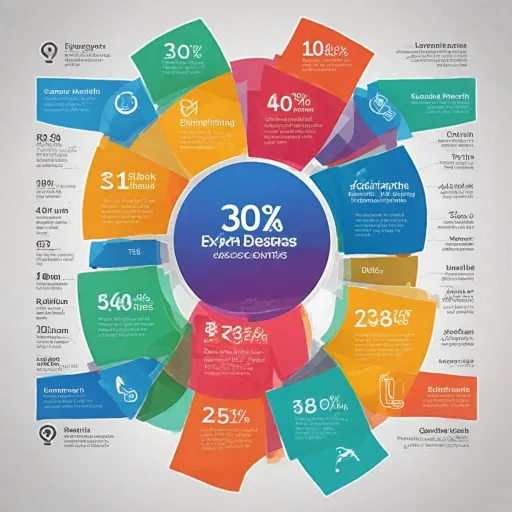
Defining Human Resources and Talent Advisors
{ \"result\": \"Exploring the Distinction: Two Integral Components in Modern Workplaces
In today’s rapidly changing professional atmosphere, understanding the roles within human resources and talent advisory is crucial for any organization aiming for sustained success. While these roles share some overlapping duties, they distinctly contribute to the overall employee engagement and workforce management strategies of a company.
Human resources encompass a broad spectrum of functions, primarily centered on employee relations, compliance, and the administration of workplace policies. This includes the recruitment process, onboarding, training, compliance with labor laws, and maintaining workplace culture. Their responsibilities are critical for enhancing employee development and implementing effective talent management solutions. HR professionals ensure that operations within the workplace are running smoothly, a crucial factor when considering employment background checks in the age of AI.
On the other hand, talent advisors focus more intensely on identifying and nurturing high potential individuals who can drive the strategic vision of the organization. Their role often involves partnering with business leaders to create workforce strategies that will align with the company’s goals, ensuring that the most qualified candidates are part of the team. They delve into talent acquisition and help in mapping out long-term talent management plans that reflect organizational growth requirements.
These roles require specific skills competencies tailored to meet the goals of their respective responsibilities. Understanding their distinctiveness and their collaborative potential can lead to a more cohesive approach to unmatched employee and organizational growth.
\"}
The Impact of AI on Human Resources
Transformative Shifts in Resource Management
Artificial intelligence has significantly reshaped how organizations manage their human resources, introducing transformative shifts in several areas. The recruitment process, for instance, has seen a leap into efficiency and effectiveness with AI-powered tools.Organizations now benefit from improved talent acquisition strategies, navigating potential employees with remarkable precision. AI systems can assess countless resumes in mere minutes, highlighting high potential candidates and further easing recruiters' burdens to find the right talent.
The integration of AI goes beyond recruitment, touching on employee development and management. By analyzing employee data, AI can identify top talent within the organization, propelling long term employee relations and development. AI tools can predict which employees are likely to excel in certain roles, thus significantly aiding strategic workforce planning.
The role of AI in resource management is not just about efficiency but also about providing insightful analytics for better decision-making. Businesses are leveraging AI to better understand employee engagement and performance, crafting strategies that suit organizational goals and enhance productivity. In line with these advancements, paper-free operations have become more achievable, streamlining processes and contributing to a seamless organizational workflow.
To better explore AI's impact on this sector, you can read more about how AI is employed in HR sectors to overcome numerous challenges and seize new opportunities.
The implications of AI in human resources are profound, continually evolving and reshaping the landscape, and preparing companies for the future of work.
AI's Role in Talent Advisory
Enhancing Talent Advisory through Artificial Intelligence
The integration of artificial intelligence in the field of talent advisory is fostering significant transformations in how organizations approach recruitment and employee development. Unlike traditional human resources roles, talent advisors are focused on identifying high potential employees early in the recruitment process and developing strategies tailored to their development and retention. AI is proving to be an invaluable ally in this strategic endeavor. AI-powered tools can analyze a wealth of data to offer predictive insights. These tools can scrutinize resumes and applications, not only speeding up the talent acquisition process but also uncovering competencies and skills that may not be immediately apparent to human advisors. By using AI to sift through vast amounts of candidate information, talent advisors can focus on strategic elements of their role, such as crafting personalized development plans for potential employees and aligning them with the long-term goals of the company. Moreover, AI enhances the understanding advisory preferences of both the organization and the individual by providing nuanced analyses of employee behavior and performance patterns. This enables advisors to recommend targeted strategies for employee development and retention, creating a more personalized and effective experience for both the company and its employees. By making these processes paper free, AI contributes to more efficient resource management, reducing the time spent on administrative tasks and allowing talent advisors to focus on the organizational and strategic aspects of their role. This shift not only optimizes the recruitment and employee development cycles but also ensures that top talent is effectively integrated into the company’s talent management strategy. For those seeking to delve deeper into understanding eligible expenses for lifestyle spending accounts, which may also be supported by AI systems in human resources, a valuable resource can offer further insights. This integration of AI into human resources and talent advisory underscores the importance of adapting to new technological paradigms to maintain a competitive edge in today's dynamic recruitment and talent management landscape.Skill Sets Required for HR vs. Talent Advisors
Distinguishing Competencies for Modern HR and Talent Advisors
Understanding the distinct skill sets required for human resources and talent advisors is vital for any organization aiming to strategically manage their workforce. The evolution of these roles, augmented significantly by artificial intelligence, underscores the need for unique competencies in both fields. The modern human resources (HR) professional acts as a custodian of employee well-being and development. Comprehension of human resources is essential when navigating the complexities of talent management and organizational resources. HR professionals today are expected to harness their skills in resource management, focusing on employee relations, and driving a culture that facilitates long-term employee development. On the other hand, talent advisors have a more strategic role. They are seen as the architects of talent acquisition and are pivotal in the recruitment process. These advisors exercise a long-term vision, identifying potential employees with high potential and guiding top talent acquisition strategies. Their understanding role in the company is more aligned towards business outcomes, fostering a collaboration with management to ensure the recruitment of candidates who align with the company's future goals. In paper-free environments enabled by advanced AI technologies, HR professionals and talent advisors must adapt by developing AI literacy as a critical competency. This includes understanding how AI tools can enhance talent management processes, streamline organizational resources, and improve recruitment strategies. The shift towards incorporating AI in these roles creates an opportunity for professionals to redefine their skill sets, focusing on both strategic initiatives and human-centric interactions. As such, the strengths of HR and talent advisors are tailored to their specific functions within the organization. While HR centers on the holistic development of employees and managing the resources talent within the company, talent advisors focus on the strategic component of attracting and nurturing high potential candidates, thereby impacting the overall talent strategy and employee acquisition significantly.Challenges and Opportunities with AI Integration
Navigating AI's Double-Edged Influence
AI integration in human resources presents both challenges and opportunities. The fusion of technology into the HR and talent advisor spaces can significantly improve efficiency but also necessitates a strategic understanding of its impact on company culture and employee relations.- Challenges: Implementing AI in HR can lead to concerns about data privacy and security, particularly within talent acquisition processes. Ensuring that sensitive employee and candidate data is protected is vital. Additionally, transitioning to a paper-free environment and adjusting to AI-driven tools require a comprehensive change management strategy.
- Lack of understanding can also be a barrier. Both human resources and talent advisors must clearly grasp AI's potential to enhance the recruitment process and support employee development, demanding new skills competencies. This necessitates continuous education and adaptation to technology advancements.
- Opportunities: On the brighter side, AI offers remarkable possibilities to streamline organizational processes. By automating repetitive tasks, HR professionals and talent advisors can focus more on strategic management, unlocking untapped organizational potential and fostering employee growth.
- Moreover, AI enables better insights through data analytics, helping to identify high potential employees and top talent, thereby supporting long-term employee development and retention strategies. This can shift the HR function from transactional to transformational, opening doors to innovative talent management approaches.












